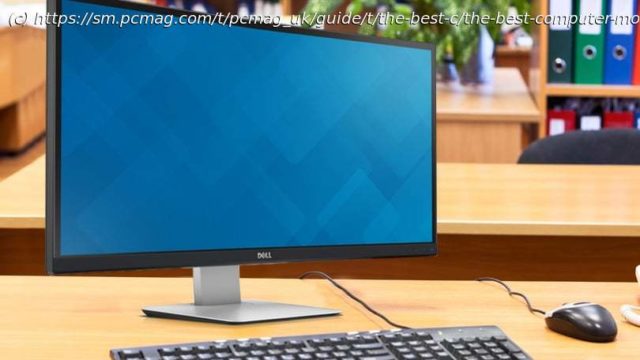Tasked with buying a squadron of desktop LCD monitors for your employees, or just one for a special task? Here’s what you need to know, along with our top-rated, lab-tested picks all across the price spectrum.
Most businesses operate within a strict capital budget, so it’s important to spend your money wisely. A basic 24-inch monitor can cost anywhere from $90 to $150. If you require more screen real estate, a basic 27-inch panel will run you anywhere from $120 to $220.
If you want to replace a dual-monitor setup with a single display, consider going with an ultrawide monitor. For around $300, you can get a 34-inch ultrawide panel that lets you easily view several windows side by side. For those who have the room (and cash) to spare, 43-inch ultrawide business models start at about $500, while gigantic, sprawling 49-inch models start at around $1,000.
A subset of ultrawide models support taking in multiple input sources and viewing them side by side onscreen, or via insets. Not all ultrawides support simultaneous display from more than one source; look for monitors that support PbP (“picture by picture”)—in which the screens from each source are displayed side-by-side—or PiP (“picture in picture”), in which video from one source runs in an inset box on the screen showing content from the other source. Bear in mind that displaying multiple video sources onscreen at the same time is not a given; you have to look for that feature if you need it.
Also, note that the screens on many new panels larger than 30 inches are concave, with the left and right edges curving slightly toward the user. These curved monitors provide a more immersive experience than flat panels and reduce distortion at the screen’s edges.
As always, be prepared to spend more for monitors with high-end, high-resolution panels and features such as height-adjustable and pivoting stands, or picture-in-picture functionality. For example, a high-end, 27-inch Wide Quad High-Definition (WQHD) monitor will cost you at least $200, while 34-inch Ultra High-Definition (UHD) or 4K displays with all the trimmings start at about $350. Fortunately, you don’t have to spend big bucks for a sizable midrange UHD monitor; plenty of 27-inch models are available for around $300 if you shop wisely. And it’s very likely that you can get by with a native resolution much lower than UHD. (More on that in a moment.)
While it’s always nice to work with a big screen, it’s not always practical or cost-effective, depending on your budget and available workspace. A 24-inch widescreen (the smallest size of mainstream desktop monitor we cover, or recommend), starting at about $90 is a good fit for users who need to have more than one window open at any given time but have limited space. If there’s room (and budget), a 27-inch screen (starting at about $120) is even better for multitasking, while a 34-inch ultra-wide panel ($300 and up) is a space-saving alternative to a dual-monitor setup.Which Panel Technology Is Best in a Business Monitor?
The most common monitor panel technologies relevant for business use are in-plane switching (IPS), vertical alignment (VA), and twisted nematic (TN).
IPS excels at accurate color and grayscale performance, and it delivers wide off-center viewing angles, while VA is known for exceptional contrast. Though they are occasionally used on business models, TN panels are best known for their gaming-friendly attributes: high refresh rates, and fast response times. TN panels used to be, on the whole, the least expensive to produce of the three, but now that they’re closer in price, TN panels for business use have largely been superseded by VA and (especially) IPS ones.






